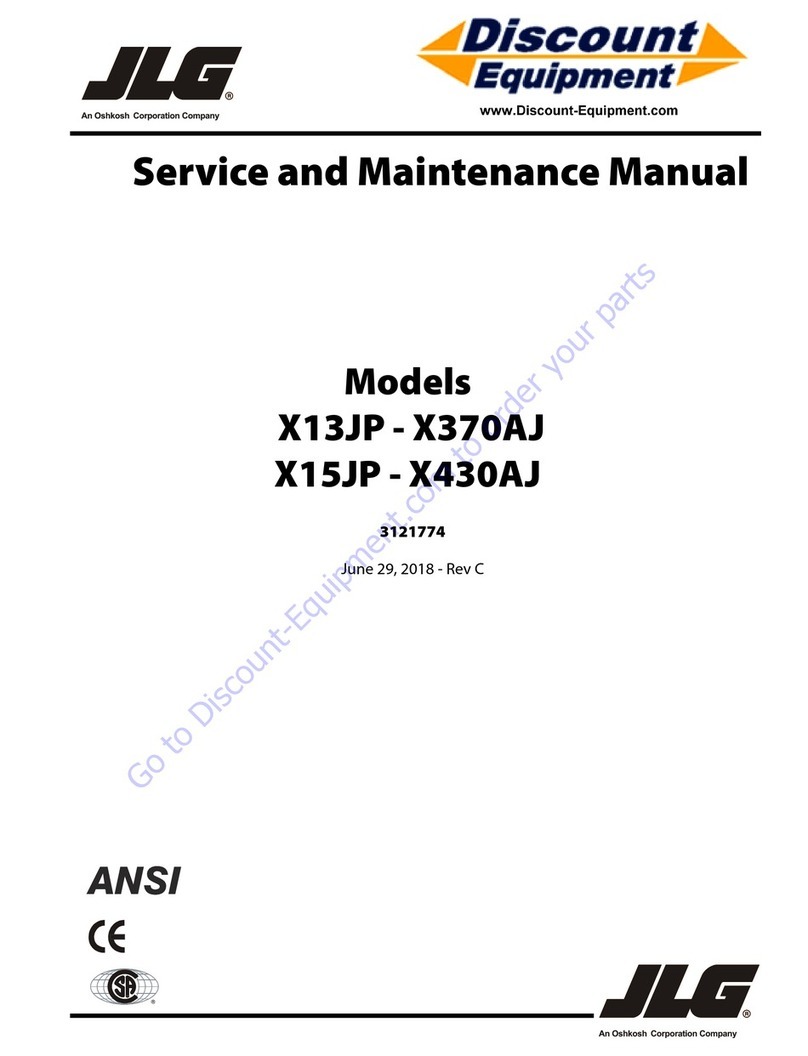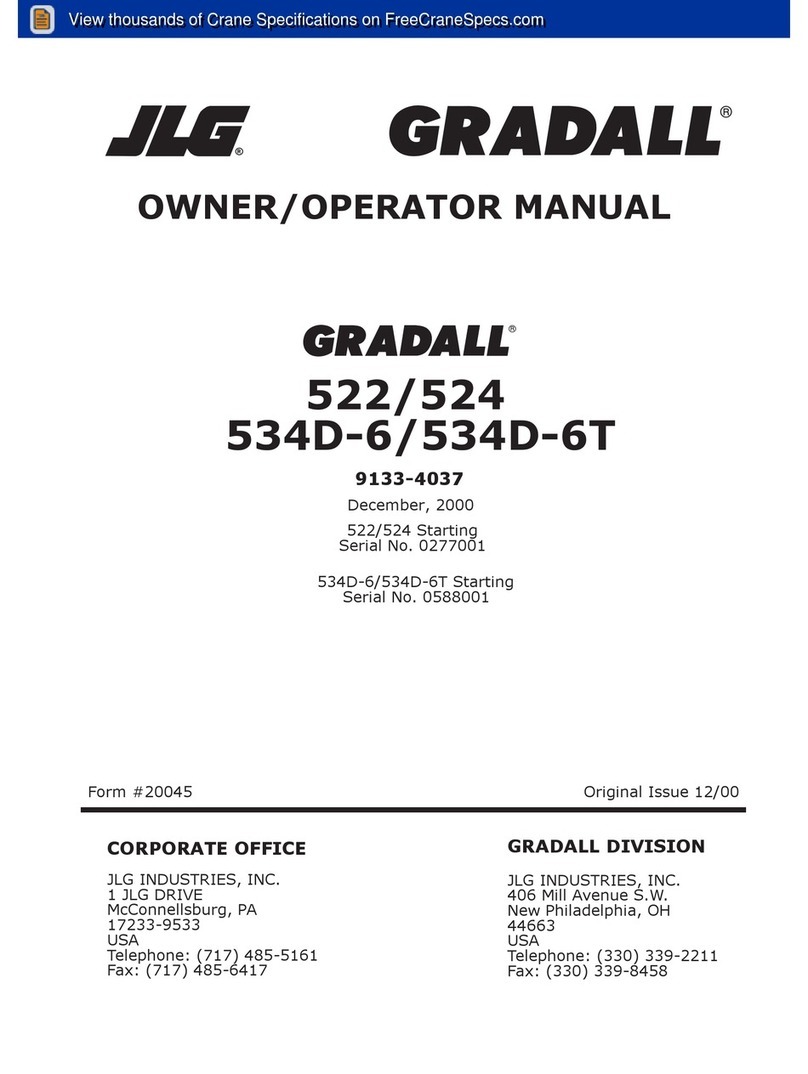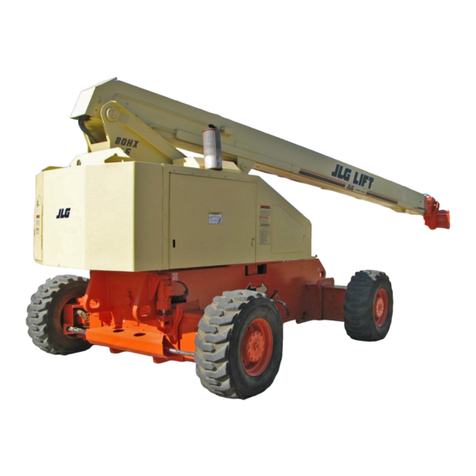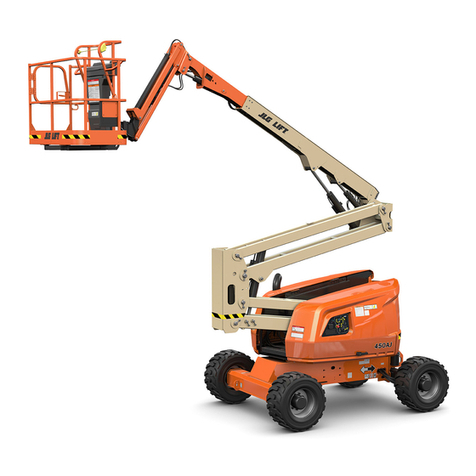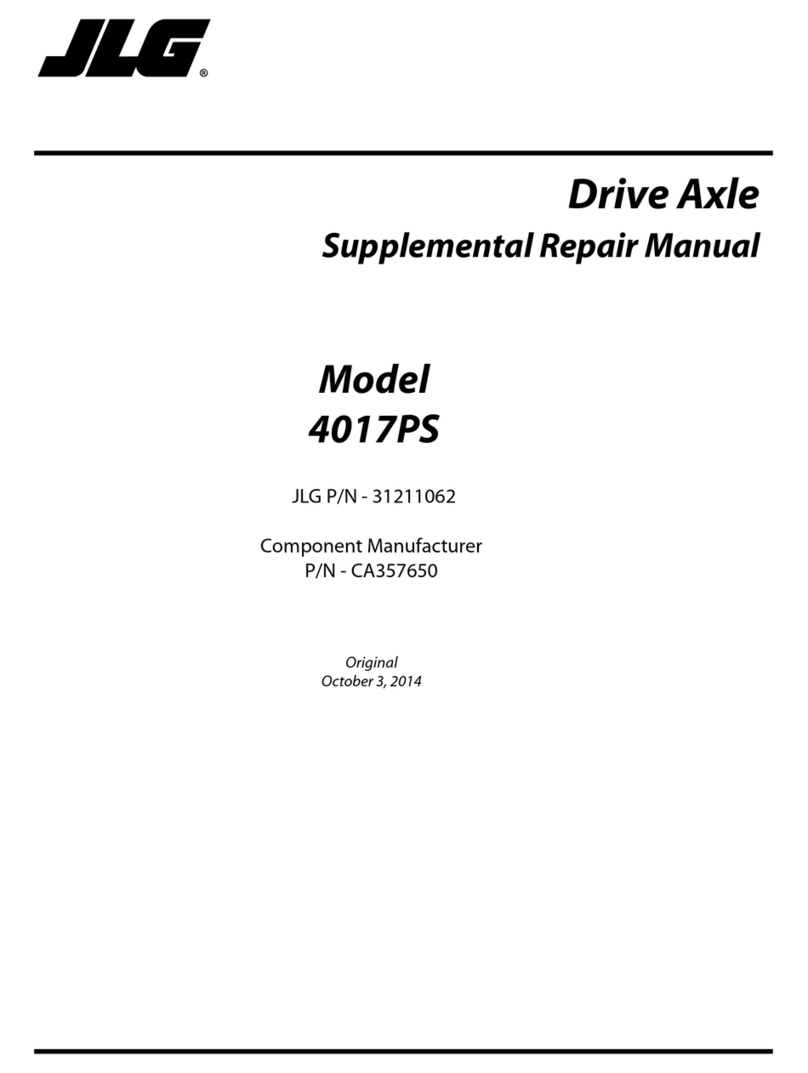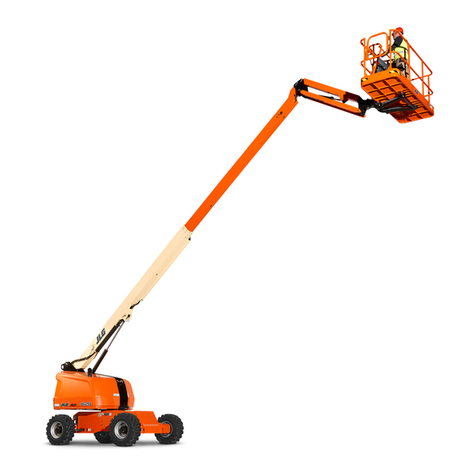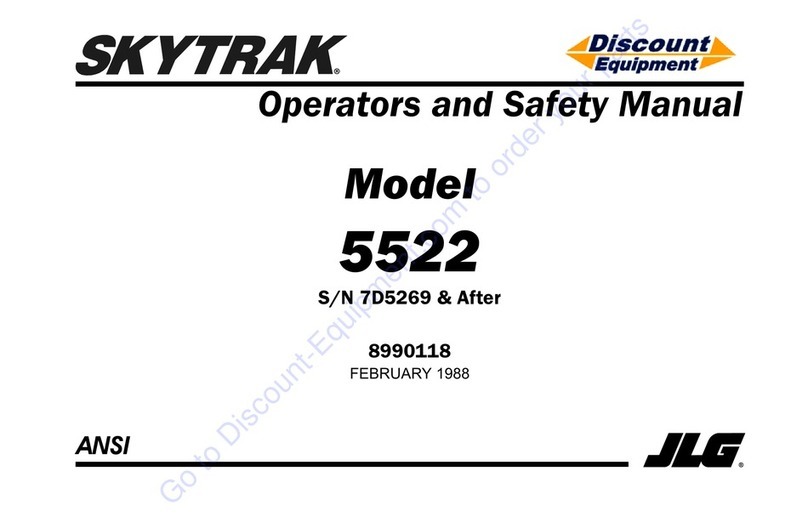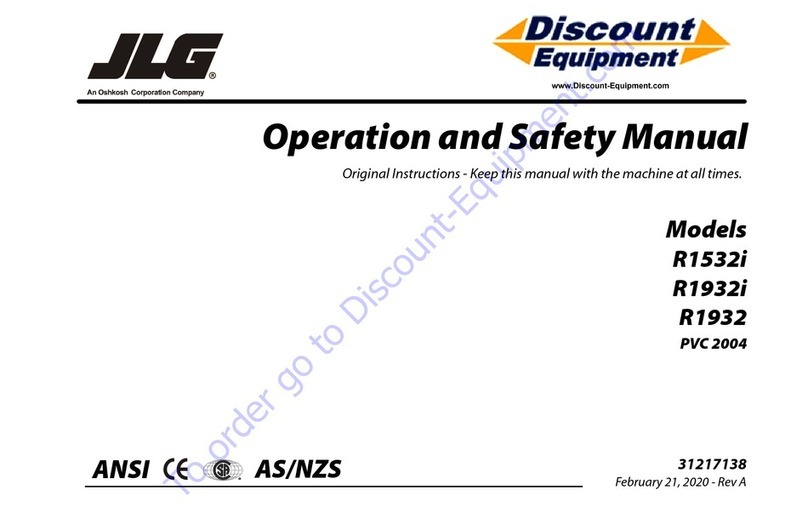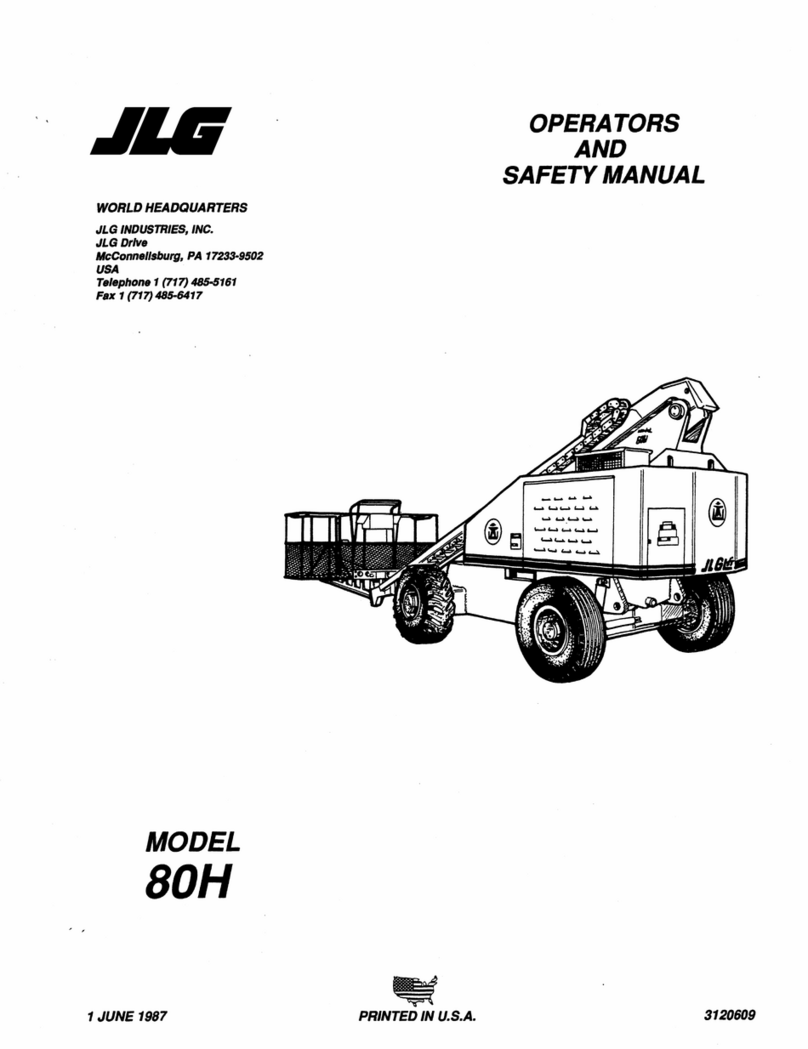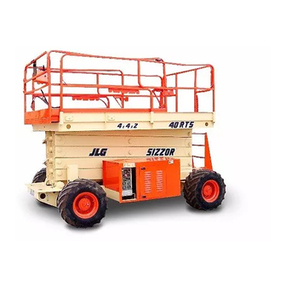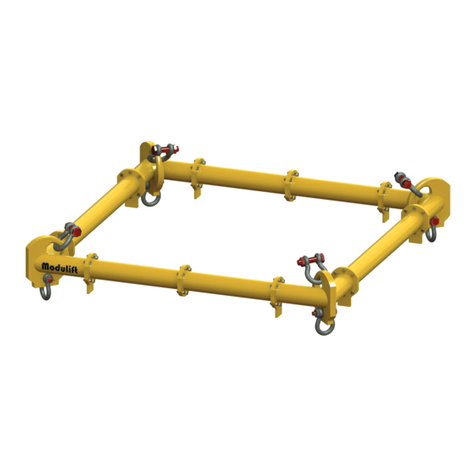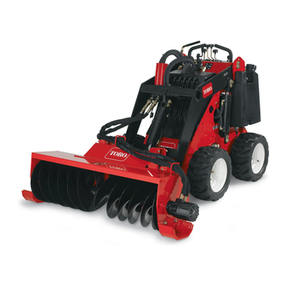
Table of Contents
iii31200938
Leveling Procedure ............................................................................. 4-10
Placing a Suspended Load ...............................................................4-11
Disengaging a Suspended Load .................................................... 4-11
4.5 Road Operation (CE)..................................................................................4-12
4.6 Loading and Securing for Transport ...................................................4-13
Tiedown...................................................................................................4-13
Lifting .......................................................................................................4-14
Section 5 - Attachments & Hitches
5.1 Approved Attachments...............................................................................5-1
5.2 Unapproved Attachments .........................................................................5-1
5.3 JLG Supplied Attachments.........................................................................5-2
Standard Quick Attach..........................................................................5-2
Manitou Quick Attach ...........................................................................5-2
5.4 Telehandler/Attachment/Fork Capacity...............................................5-4
5.5 Use of the Capacity Chart...........................................................................5-5
Capacity Indicator Locations ..............................................................5-5
Sample Capacity Chart..........................................................................5-6
Example......................................................................................................5-8
5.6 Attachment Installation ...........................................................................5-10
Standard Quick Attach.......................................................................5-10
Manitou Quick Attach ........................................................................5-12
JCB Quick Attach ..................................................................................5-14
Hydraulic Operated Attachment....................................................5-16
5.7 Adjusting/Moving Forks ..........................................................................5-17
5.8 Attachment Operation ............................................................................. 5-18
Carriage w/Forks ..................................................................................5-19
Side Shift Carriage ...............................................................................5-20
Fork Positioning Carriage..................................................................5-22
Bucket ......................................................................................................5-24
Multi-Purpose Bucket.........................................................................5-26
Carriage with Lift Lug .........................................................................5-28
Adjustable Truss Boom......................................................................5-30
Fork Mounted Hook............................................................................ 5-31
Quick Attach Mounted Hook...........................................................5-32
Truss Boom.............................................................................................5-33
5.9 Hitches............................................................................................................5-34
Retrieval Hitch....................................................................................... 5-34
Section 6 - Emergency Procedures
6.1 Towing a Disabled Product........................................................................6-1
Moving Short Distances .......................................................................6-1
Moving Longer Distance......................................................................6-1
6.2 Emergency Lowering of Boom.................................................................6-2
6.3 Cab Emergency Exit......................................................................................6-2
